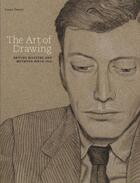Résumé:
Imagining England's Past takes a long look at the country's invented histories, from the glamorous to the disturbing, from the eighth century to the present day.
England has long built its sense of self on visions of its past. What does it mean for medieval writers to summon King Arthur from... Voir plus
Imagining England's Past takes a long look at the country's invented histories, from the glamorous to the disturbing, from the eighth century to the present day.
England has long built its sense of self on visions of its past. What does it mean for medieval writers to summon King Arthur from the post-Roman fog; for William Morris to resurrect the skills of the medieval workshop and Julia Margaret Cameron to portray the Arthurian court with her Victorian camera; or for Yinka Shonibare in the final years of the twentieth century to visualize a Black Victorian dandy?
By exploring the imaginations of successive generations, this book reveals how diverse notions of the past have inspired literature, art, music, architecture and fashion. It shines a light on subjects from myths to mock-Tudor houses, Stonehenge to steampunk, and asks how - and why - the past continues so powerfully to shape the present. Not a history of England, but a history of those who have written, painted and dreamed it into being, Imagining England's Past offers a lively, erudite account of the making and manipulation of the days of old.
Praise for Imagining England's Past.
'Susan Owens conjures our imagined past with such vivacity and lyricism that I can see the dawn mist rising over fabled fields and hear the tread of fictional histories on the worn stairs of yesteryear. Packed full of myths, stories, poems and paintings I found this book impossible to put down!' Charlotte Mullins, broadcaster, art critic and author of A Little History of Art.
Donner votre avis















